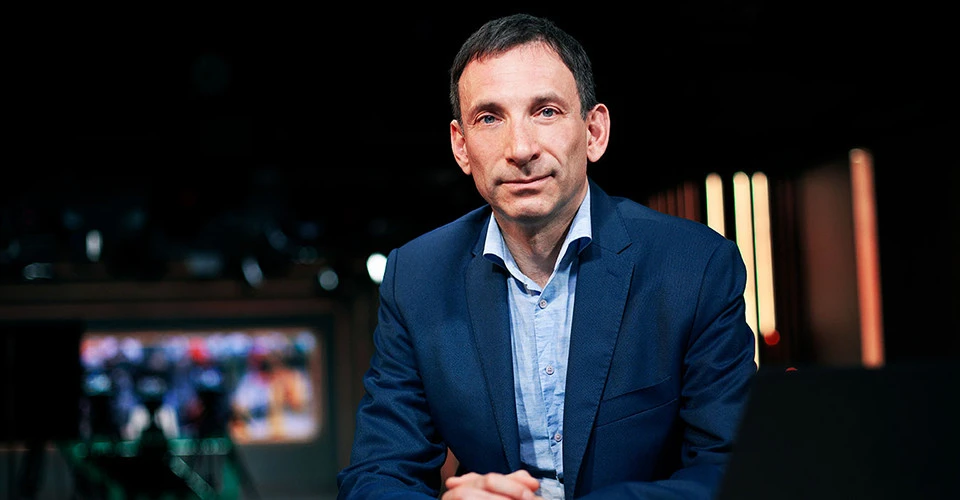
Russian ports and factories on fire: Vitaly Portnikov’s column
Recent drone attacks have targeted strategic locations in Tula, Oryol, Smolensk, and Ust-Luga in the Leningrad region of the Russian Federation
These attacks have inflicted significant damage on crucial military and strategic sites within Russia. Reports suggest that a fire at the Ust-Luga seaport has been ongoing for nearly a day, potentially impacting the terminal of Novatek, a major Russian natural gas producer and the largest private entity in the Russian gas energy market. Additionally, there are indications that drones targeted military installations in these Russian regions. This underscores the transformative impact of drones on the dynamics of the war between Ukraine and Russia.
It's important to recall that this war commenced in February 2022 with Russia's assault on Ukrainian military facilities. The initial offensive aligned with the ambitions of Russian President Vladimir Putin, who aimed to swiftly assert control over Ukraine's territory. Simultaneously, there were plans to occupy the Donetsk and Luhansk regions, previously recognized as independent "people's republics" in 2014 during the initial phase of Russia's campaign to undermine Ukrainian statehood and seize our lands.
However, it's evident that in 2022, the Kremlin did not anticipate that Ukrainian forces, two years into this new phase of the conflict, would be targeting Russian military installations, including gas terminals.
This is just the beginning of the Russian-Ukrainian war involving drones. In the upcoming years, expect more news about Ukrainian strikes targeting strategic military assets in Russia. It doesn't imply that Russia won't retaliate; counterstrikes from Russia are expected. However, the shift in the war's nature isn't about Russian strikes – those have been ongoing. Recall last winter (2022-2023) when Russia aimed to disrupt Ukraine's civilian energy infrastructure, leaving Ukrainians in the cold and darkness.
Recall the recent Russian attacks on Ukrainian cities, with military facilities reportedly prime targets. This aligns with the shift from Putin's initial blitzkrieg strategy to a prolonged war of attrition.
Presently, Russia believes it can achieve in three years what wasn't accomplished in three days, and extend this timeline to five or six years if needed.
We recognize that Russia is determined to revive what it sees as the former Soviet Union's glory within 1991 borders. The first step in this ambitious genocidal plan is erasing Ukraine from the world map. Russia appears willing to pay any cost for this objective.
A good question arises: what does "any cost" truly mean? Is it limited to damaging our infrastructure, destroying our cities, and causing the death of Ukrainian citizens? These are nightmares that Putin and his chauvinistic compatriots seem to envision for Ukraine.
The situation takes a different turn when the toll is on Russia itself. As a war of attrition unfolds, Russia may witness the loss of critical economic assets, infrastructure, and military industry. Russian citizens could perish beneath the ruins of these structures. But for the Kremlin, human lives in Russia seemingly hold absolutely no value in this equation.
As you know, Russia is willing to pay any cost for territorial gains. When it comes to the lives of its citizens, this reflects a longstanding social consensus in Russia, dating back to the Moscow State, the Russian Empire, and the Soviet Union. Even in modern Russia, despite being in the 21st century, the situation remains unchanged and, I’d argue, has worsened compared to the later years of the Soviet Union. Back then, people at least discreetly expressed disagreement with the loss of their compatriots in the senseless war in Afghanistan.
However, the scenario is different when it involves property. The Russian security service, led by Vladimir Putin, has assured criminal clans – partners in leading the Russian Federation – of the inviolability of their property. Together, they've established a system that prevents any contemplation of a change in power in Russia for the next decade.
Who benefits from preserving the current regime if strategic Russian facilities are facing fires? The owners of entities like "Novatek" stand to lose terminals, gas, and money. Importantly, these resource owners are indirectly linked to the leadership of the Russian Federation, particularly the security service.
Certainly, stating that returning to the 1991 borders and dealing with economic implications might be a risk is one perspective. However, we must recognize that these resources are essential for war, and war is not without costs. The ability of the Russian economy to mitigate the impact of Western sanctions enables Vladimir Putin to envision further militarization in the future. This suggests that the militarization and relative social stability in Russia are not immediately threatened.
Yet, each new Ukrainian assault on Russian military and strategic sites should serve as a reminder to the Russian president. It indicates that the situation may not be as secure as perceived. This, in turn, prompts Russia to reconsider the necessity of continuing this adventure Putin has led the country into for several years.
About the author. Vitaly Portnikov, journalist, the Shevchenko National Prize laureate
The editors do not always share the opinions expressed by the blog authors.
- News














































